One of the most crucial skills great salespeople have to master is objection handling. Most customers will have questions or express concerns sometime during the sales process. If you are unable to get past their concerns, you’re not getting the sale.
Too many sales team members struggle with overcoming objections and default to negotiating on price. This is a bad strategy as it reduces your role to transactional and lets the customer know you’re always willing to drop pricing.
Before we get into our list of tips on ways to handle objectives to close more deals, let’s define objection handling.
What Is Objection Handling?
Objection handling is a strategy for responding when customers bring up concerns about your products or services. The way you respond can build trust and confidence or cost you a sale. When you approach objections properly, it helps move the deal forward.
Many salespeople fear objections, but they shouldn’t. If a customer has some doubts about what you’re selling, the sooner you can uncover and address them, the better off you’ll be. A prospect’s objections help you frame the conversation to make everything more relevant for your customer.
While the information you present to combat objections will differ depending on what issues your customer raises, there are some overarching strategies you should employ whenever you encounter sales objections.
Techniques for Objection Handling
Before we talk about specific objections and responses, let’s discuss how you respond to objections in sales. This begins with active listening as part of a multi-step process.
Active Listening

To practice active listening, it requires you to slow down a bit. For many salespeople hearing a sales objection, their first instinct is to jump into the conversation and respond. A better strategy is to pause and not interrupt. Wait until your prospect finishes expressing their objection freely and focus on listening. Before you can frame the right response, you need a firm understanding of what the concern is about.
Repeat What You Hear
Make sure you acknowledge the customer’s objection so you know exactly what the issue is. Then, repeat the prospect’s objection. This helps ensure you understand the issue and helps build trust with your prospect during the sales call. You can’t overcome objections in sales if you don’t grasp what your customer is asking.
Validate the Concern
Whether you think the customer’s objections are valid or not, you need to validate their point of view. By empathising, you are building trust and showing you are taking their concerns seriously.
Ask Follow-Up Questions
Ideally, sales reps want to engage their prospects in a conversation to drill down to find the real sales objection. An effective technique is to ask follow-up questions to clarify or narrow the focus. Asking open-ended questions allows prospects to continue telling you why they are concerned. The more information you get, the better you can position your response.
Provide Social Proof

This is an important step in mitigating concerns that many sales reps struggle with. You should always have a few success stories in your back pocket that you can pull out when overcoming objections. For example, you can tell your prospects that another customer had a similar concern, how you overcame the issue, and how they went on to be successful.
Much of the job of sales professionals is to mitigate risk for customers and instill confidence in their decision to buy your product or service. When you can show an economic buyer that other decision-makers felt the same way, but continued the buying process and had success, you help alleviate their concerns.
Case studies, testimonials, and customer reviews with similar concerns and how you overcame their objections are powerful tools, especially when you can tie your products and services directly to customer success. Make sure you come to sales calls equipped with the information you need.
Watch Your Timing
There are times you cannot handle every objection immediately. Be careful about how you approach this, especially during a discovery call. Pushing too hard at the wrong time can move things in the wrong direction.
For example, a prospect might ask for information you don’t have at your immediate disposal. Don’t guess, try to gloss over the subject, or produce a false statement. Be honest and transparent and let them know you will do your research about the prospect’s concern and get back to them. However, don’t let them get away until you set a time and date for a follow-up meeting to keep things moving forward.
Anticipate Common Objections
Customers tend to have a few similar concerns. Your best strategy for overcoming sales objections is to be prepared. When you can anticipate sales objections and weave them into your business case or value proposition, you can often deal with the common sales objections before they are raised.
When you hear the same objections over time, you will get more opportunities to improve your objection handling skills, but it should also be a sign that you should re-evaluate your sales presentation to overcome sales objections earlier in the process.
Be Patient

Handling sales objections takes patience. We talked about the need for account executives to pause before jumping in. You also need to show this same patience during the objection handling process. If you move on to another topic before you complete handling objections, you haven’t finished the job.
Sales reps need to fully overcome a prospect’s concerns before moving on to anything else. Otherwise, their concern continues to hang around in the background and can undercut the sale.
The 32 Most Common Objections and How You Overcome Them?
Let’s get the big one out of the way first. The biggest objection sales reps hear during the selling process is that the price is too high.
1. It’s too expensive.
Every sales rep has heard this plenty of times. It’s among the most common sales objections and often not the true objection. Think of it this way: if the prospect took what you said at face value and believed your product or service could solve their problem, the price would likely not be the true objection.
What you likely have done yet is to make the business case for value. So, maybe you haven’t explained the value proposition well enough. When you haven’t established a perceived value in the prospect’s mind, your products or services will always appear to be too expensive.
Strategy: Circle back and make sure there are no other outstanding objections that have come up during the selling process. If there are, make sure you handle objections fully before talking about price. Your strategy here is to go more deeply into the features and benefits of your products or services and establish the ROI. Remember, even people that want to buy right now may still argue about the price to see if they can get a better deal.
2. We don’t have the budget

Another common objection an account executive hears often is that a prospect doesn’t have the budget to make a deal. There may be legitimate reasons that make this a valid concern. Handling objections effectively requires you to understand the real reason there may be budget issues.
Strategy: Probe for details. Can you offer financing options, delay payments until a new budget year, or structure a payment plan that will work for them?
3. We already have a solution.
How a salesperson responds to this objection is important. While you don’t want to denigrate a choice a prospect made or talk badly about your competitor, this does give you an opportunity to learn more about their choice and why it was made.
Strategy: Ask why they made the decision and how it is working for them. Discuss whether there are things you wish it could do and explain how you differentiate your product or service from your competitor. It helps if you have some social proof about why others switched to you.
4. I’m not interested.
This may be a true statement or they may just be trying to end the conversation.
Strategy: Make sure you understand what they are saying. Does this mean the decision-maker is not interested at the moment or ever? The more you can clarify what they mean, the better you can respond. If they truly are not a good fit for what you’re selling, the sooner you find out the better.
5. I’m not the decision-maker.

The larger the sale, the more likely there is a buying group involved. Hopefully, you uncovered this during your research, but if not, that’s OK.
Strategy: Find out who is involved in the buying process, whether you can meet with them, and ask for a referral.
6. Can you just send me the information?
How often have you heard that? Before you say yes, see if you can dig just a little deeper.
Strategy: Let them know you’re happy to do exactly that, but see if you can get them to tell you what they are most interested in so you can supply the best information.
7. I can’t commit to a long-term deal.
There may be valid reasons for this, such as the customer doesn’t have the authority to enter into a contract or is worried about performance.
Strategy: Restate your value proposition and offer alternatives. If the agreement itself is the only remaining issue, see if you can offer a six-month contract rather than a year, or whether there are different terms or payment structures that will work better.
8. I’m already locked in with someone else.
This allows you to find out if they’re happy with their current situation or whether there are shortfalls you might be able to overcome.
Strategy: Find out when their agreement with a competitor is up for review, so you can put it on your calendar to revisit. If you can offer incentives for switching early, that can work as one of your effective objection handling techniques.
9. A competitor is cheaper.

That may be true, or your prospect may just be trying to negotiate the price down.
Strategy: You’ll want to find out whether this is the case. Hopefully, you know the competitor’s product or service well enough to demonstrate how your offer provides better value, which would more than make up for a price difference. If there really is a lower-priced deal on the table, ask if they will provide the competitor’s price to see if you can beat it.
10. A competitor said this about you.
Not all salespeople are 100% honest. If a competitor says something negative about your company, you need to confront it directly — whether it’s true or not.
Strategy: If it’s a true statement, be honest and acknowledge it. Then discuss how you overcome it. If it’s not true, let them know it’s not true. Before explaining any further, see if they accept that statement. Often, they’ll move on. If they appear unsure, ask follow-up questions and provide proof.
11. We’re too busy right now.
That might be the case or a way to end the meeting. Often, you’ll find this prospect will always be too busy.
Strategy: See if you can find out what other priorities are more pressing and whether you can alleviate some of their concerns. For example,they may feel they don’t have the resources to implement your solution right now. Can you provide a more turn-key solution? If not, schedule a follow-up for when they’re not so busy.
12. We don’t have the capacity (or bandwidth) to do this.
If this is the case, you may need to show how the ROI is worth expanding their capacity or how you provide additional value that outweighs their concerns. If they do not really have the capacity or the commitment, it may be time to move on.
Strategy: Emphasise how your product or solution adds value to the equation and show how easy it is to work with you. Open-ended questions can also help you define the sales objection more clearly.
13. We don’t need your product/don’t have that problem.

Prospects may not know they have a problem you can solve. During the qualification stage, you would hopefully uncover their needs, so it may be time to explain why you’re suggesting a particular product or service.
Strategy: Ask what they are doing to solve the problem since many others struggle with it. If possible, have them explain their success and look for opportunities to enhance what they are doing.
14. You don’t understand our business.
Don’t be argumentative. Instead, try to find out why they feel this way. Explain your experience and how you have helped others overcome their problems.
Strategy: Validate their concern and then restate what you believe their challenges are. Ask them to help you see what you’re missing so that you can frame your response.
15. This isn’t a high priority for us right now.
That doesn’t mean it’s not a priority. It might just mean that they have other things they’re worried about at the moment.
Strategy: Keep them talking. Ask what their current priorities are. You may be able to demonstrate how your product or service fits in with their priorities or relieves a burden so they can focus on their high-priority items.
16. The ROI isn’t there.
This may mean you haven’t established the ROI or that they need hard numbers to justify moving forward.
Strategy: Schedule a time to review a formal business analysis to show the ROI with actual numbers. Ask any questions you need to gather information to help guide your presentation. Come prepared with case studies and testimonials showing how your product or service delivered the ROI they need.
17. I don’t understand how you can help me.

This may be a case where you haven’t sold the prospect on your value proposition, or they really may not understand what you’re selling.
Strategy: Clarify what they don’t understand so you can address the real objection. You need to find out, for example, whether this is a technical question or a financial one. You may need to bring in additional expertise to help or talk to others within the organisation.
18. I’m not sure your product will work with our current products/way of doing business.
You need to find out what they are worried about integration and compatibility, or whether it’s a cultural concern.
Strategy: Ask what tools or processes they are currently using. You may have a better solution than what they are doing now or have examples of how you integrated your products seamlessly with others.
19. I don’t have a need right now. Call me back later.
Is this a brush-off or are they just busy?
Strategy: Let them know you understand and see if you can schedule a follow-up call and understand what they might be interested in discussing.
20. Why are you calling? Why would we be interested in what you’re selling?
Customers get a lot of sales calls and pitches. It can be a frustrating experience, so resist the urge to snipe back.
Strategy: Let them know that it’s not just a cold call. Maybe they responded to an email, filled out a form, and signed up for information. If they did, remind them. If not, let them know you did some research and see if they might have a specific need you can help them with.
21. I saw bad reviews about you online.

If you’re in business long enough, you’re not going to make every customer happy. Unfortunately, some of them may express their thoughts online.
Strategy: If possible, find out what the review said so you can address the concern directly. Be open and honest about how you handle problems and objections. Remember, your prospects have likely had to deal with bad reviews, too.
22. I’ve tried this before and it didn’t work.
Often, decision makers that have had a bad experience with one product will be hesitant to buy another. Unfortunately, your company may get thrown in the same bucket as another if this is the case.
Strategy: You need to ask questions to understand what they tried and why it didn’t work. Perhaps they bought the wrong product or didn’t understand how to use it. Explain how you overcome these concerns by showing them how your product or solution works differently. Reassure the customer that they won’t have this problem with your solution.
23. I need to think about it some more.
This might be a case of delaying a decision or if they are not ready to make a decision.
Strategy: Find out what specific issues they are thinking about and whether you can provide additional information to help them make a decision. Depending on how you interpret what they say, you can either provide more insight or nudge them in the right direction by instilling some urgency.
24. I’m not familiar with your company.
This is a sign that you haven’t established trust yet.
Strategy: Talk about your company’s experience in this area and how you’ve helped others in the business. If possible, name drop a few well-known customers that do trust you or offer to provide references.
25. I need to check with my boss.

When you hear this, you know that the person you’re talking to likely doesn’t have the buying authority to make a purchase decision. Or, they may be just putting you off because they don’t want to process.
Strategy: Ask if you can meet with the boss or include them in the discussion so you can present to them directly. See if you can get a referral or a meeting scheduled.
26. I talked to my boss. He or she’s not interested.
This can be the end of the road and you need to be prepared to be a little aggressive. One simple question can help here: Why?
Strategy: Probe for what the concerns are and then see if you can set up a meeting with the boss. You also want to know whether the person you’re talking to would support the decision and would be an advocate. It makes a big difference in how you position your response.
27. Does your product do X?
If it does, great. That’s an easy objection to overcome. If not, you’ve got some work to do.
Strategy: Find out why that particular feature is important. You may be able to shift the conversation by showing how you don’t do that, but you do have another way to solve their problem.
28. I need to get additional quotes.
You may be in a competitive situation or it might be a way to end the discussion. If they do need to get additional quotes, you won’t likely be able to stop them.
Strategy: Help them to understand the specific benefits you offer, make sure they are getting quotes for similar products, and ask if you can have a final opportunity to discuss business after they receive quotes but before they make a decision.
29. I need to talk to my partner first.
A prospect may say this to be polite (rather than saying no) or they do need to check with their partner(s) first.
Strategy: Don’t challenge them, even if it is a stalling tactic. That just creates conflict. Reiterate your value proposition so it’s top of mind when they talk with their partner. See if you can meet with them together. An effective strategy to find out where the prospect is in their thinking is to ask them what they would do if their partner said the decision was up to them.
30. You’re all the same.

Hopefully, they are talking about products or providers and not “you salespeople.” This is a clear sign you haven’t differentiated your products or services from your competitors.
Strategy: Revisit your key points of difference and value proposition. Recognise that every sales rep says they have the best products and customer service. You need to provide concrete examples that demonstrate why you offer a different (and better) solution.
31. I would consider buying from you if you could also do X.
This might be an attempt to squeeze out a better deal.
Strategy: Before you agree to make any concession, whether it’s lowering in price or throwing in something else, you need to make sure it’s the only thing left to discuss. If it’s just one objection in the mix, you need to clear all the others before you start negotiating add-ons.
32. Thanks, but I’m not interested.
It’s such a simple statement, but it can be hard to overcome. If possible, ask follow-up questions to find out whether this is a real objection.
Strategy: Your goal here is to politely find out why they’re not interested. If you believe you have a solution to their problems or can help make them more profitable, why wouldn’t they be interested?
Overcoming Sales Objections
The more you face these objections, the better you’ll get at handling them, but it helps to be prepared. You don’t want to struggle to handle an objection in front of a prospect.
Consider role-playing with another account executive or sales manager to refine how you deal with objections. Sales training can help, too.





